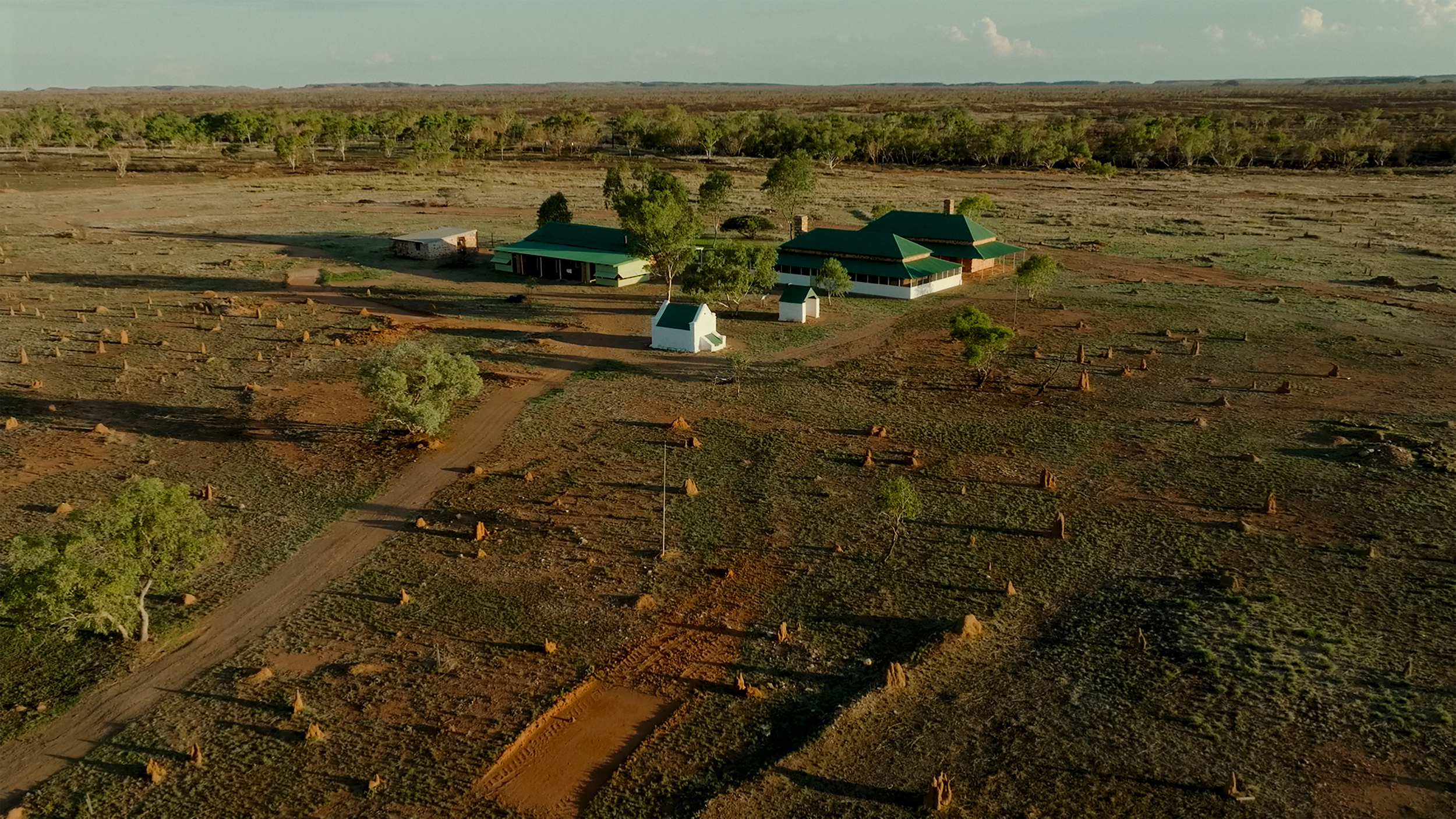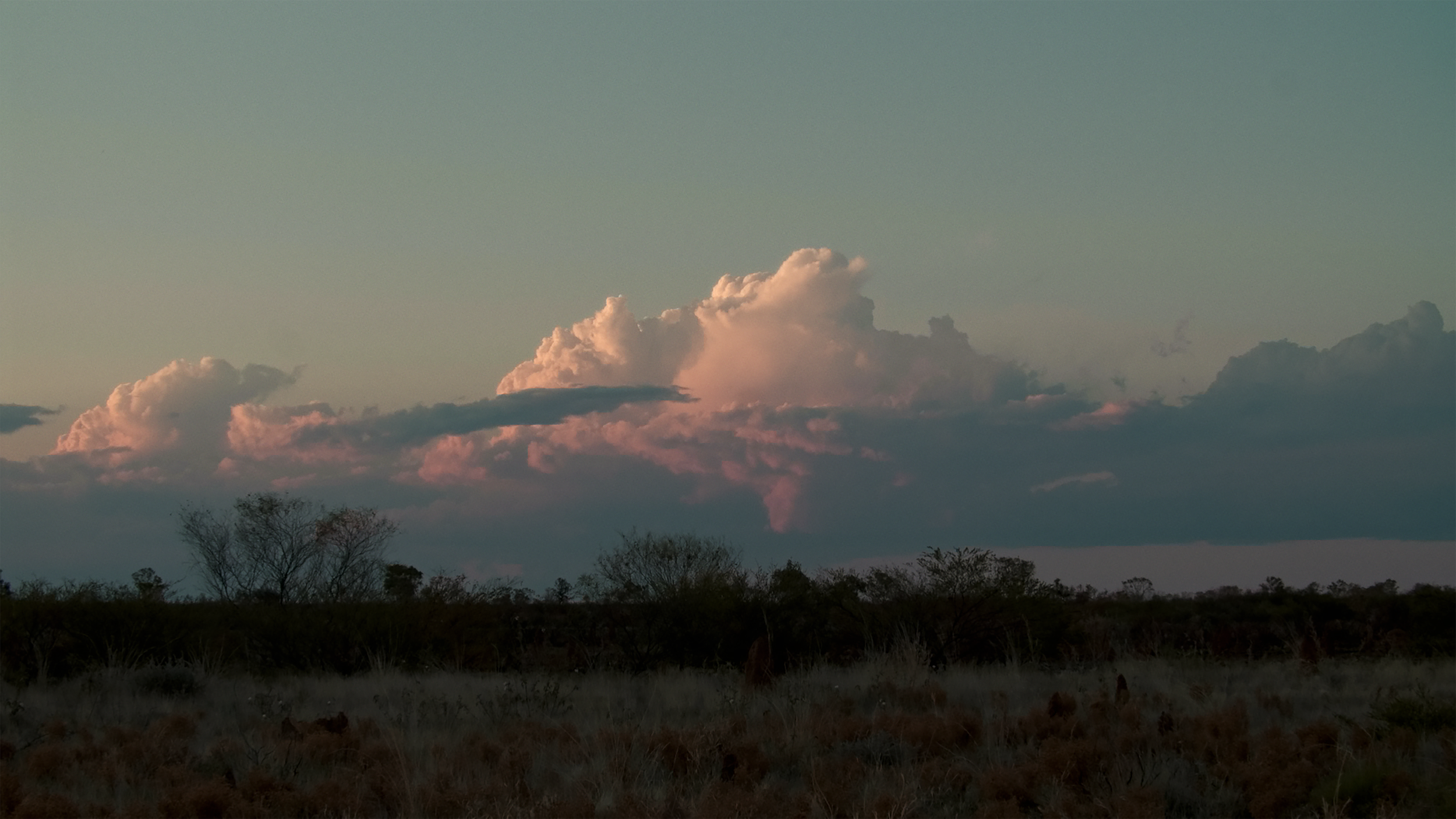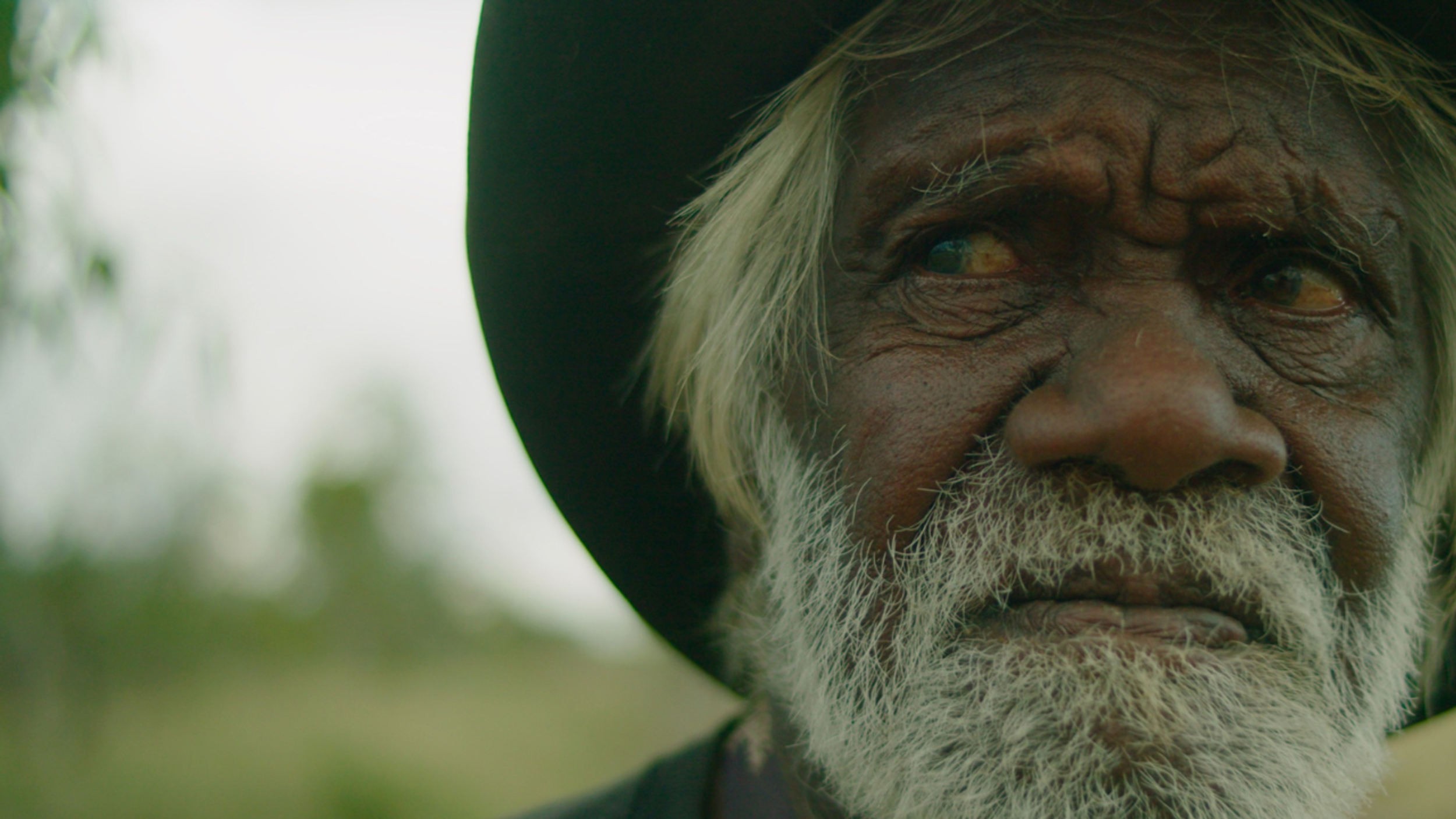The Truth About the Telegraph: Article
Knowledge hub

Tennant Creek Telegraph Station, The Truth About the Telegraph (film still), courtesy of GARUWA and Ryan Andrew Lee
Research Project
The Overland Telegraph Line 150th Anniversary Research Project
Coinciding with the 150th Anniversary of the Overland Telegraph Line (OTL), NCM facilitated a truth-telling project by GARUWA, empowering First Peoples to share these hidden histories.
Truth-telling is a process of engaging with a fuller and more diverse account of Australia’s history. For First Nations people, truth-telling begins to redress historical bias and structural racism by acknowledging the injustice, violence and dispossession experienced as a result of the ongoing colonisation of Australia. Truth-telling is also about recognising First Nations connection, ownership and care for Country. It provides an opportunity for First Peoples to assert the validity of their knowledge, cultures and experiences, and to celebrate strength, contributions and resilience. By reconceptualising Australian nationhood, truth-telling is an important step towards healing, justice and reconciliation between First Nations and the broader Australian community.
The OTL is often celebrated as Australia’s greatest engineering and communications feat of the 19th century.
The OTL was an electrical communications system established by colonial settlers and funded by the South Australian Government over 150 years ago. The line was constructed in three sections between 1870 and 1872 and it spanned the length of the country from Adelaide to Port Darwin. It was erected using telegraph wire and thousands of poles, insulators and batteries, linked by repeater stations to boost the electrical signal. The OTL is often celebrated as Australia’s greatest engineering and communications feat of the 19th century.
The OTL was not the first communications system to exist in Australia. Aboriginal songlines, also known as storylines, have traversed the Australian continent, from coast to coast, for millennia. These complex pathways of communication are embodied in Country, the waterways, lands and skies, to which First Nations peoples are connected through ancestral, cultural and familial ties. Together with trade and exchange routes, the stories sung along these pathways connect people and enable the sharing and maintaining of law, knowledge and culture across generations.
The OTL was not the first communications system to exist in Australia. Aboriginal songlines, also known as storylines, have traversed the Australian continent, from coast to coast, for millennia.
The OTL was a major colonial infrastructure intervention across First Nations’ lands. The telegraph and repeater stations extended over 3000 kilometres across the country’s centre. For the Aboriginal people impacted, their lives were irrevocably changed. The line’s route facilitated access to the interior, enabling its colonisation by settlers who occupied and exploited Aboriginal land and dispossessed the Traditional Owners. The manned repeater stations, constructed at approximately 200-kilometre intervals along the OTL, were integral to this expansion, visited by telegraph staff, pastoralists, travellers, miners, explorers and scientists. The stations were located at water sources, vital to the survival of Aboriginal peoples and indigenous wildlife and often sacred sites. As a result, the stations became focal points of interaction, exchange and conflict. For Aboriginal communities, the story of the OTL has continuing relevance today. Their experiences and perspectives of this history, however, are little known across Australia.
The telegraph and repeater stations extended over 3000 kilometres across the country’s centre. For the Aboriginal people impacted, their lives were irrevocably changed.

Engaging in this truth-telling project was an important way to address the lack of First Nations representation and make space for these largely unacknowledged stories to be told. In 2022, the National Communication Museum (NCM) commissioned GARUWA, a First Nations owned and operated production company, to lead this project. GARUWA set about uncovering the complex truths surrounding the OTL’s construction, operation and legacy from the viewpoint of First Nations Australians. They have documented a fuller and more diverse representation of the OTL’s history, recognising and promoting the strength, experiences and contributions of First Nations peoples in Central Australia. The outcome is a short, documentary film, The Truth About the Telegraph, directed by Kieran Mpetyane Satour (Gurindj/Malngin, Pertame Arrernte and Worimi).
The way in which The Truth About the Telegraph has been made is as important as the film itself. GARUWA are leaders in community-led creative projects, committed to ethical engagement, collaboration and cultural safety. Their approach recognises the inherent right of First Nations peoples to determine their own narratives and prioritises mutual learning and respect. In the development of the OTL film, GARUWA consulted with representatives of ten communities in Australia’s Central Desert and conducted oral knowledge interviews. This consultation process established strong relationships and guided the engagement of storytellers, who worked with GARUWA to identify and develop their stories, supported by historical and archival research. The stories chosen provide a diverse snapshot of experiences, individuals and time periods relating to the OTL. They explore deeply the cultural landscape pre-existing the OTL. The stories emphasise the continued connection to country and culture.
This truth-telling project was an important way to address the lack of First Nations representation and make space for these largely unacknowledged stories to be told.

The Truth About the Telegraph documents stories from the Central Australian section of the OTL. The approach is qualitative, focusing on the Barrow Creek and Tennant Creek Telegraph Stations. Kaytetye and Warumungu storytellers have chosen and shared their stories, their way. Kaytetye Senior Elder, Tommy “Walkabout” Jangala talks of Kaytetye Country, singing the song of Arelpe, the Moon Man, who created this Country with Thangkenharenge, the Kaytetye Bird Women. The son of a Barrow Creek station employee, Walkabout explains that telegraph line workers transgressed Kaytetye law in their treatment of women and two employees were speared in retribution in an event now known as the Barrow Creek Massacre. Kaytetye woman, Kumanjayi Thompson speaks about the police-led violence in the aftermath of the massacre, during which many Aboriginal men, women and children were killed indiscriminately.
Senior Warumungu Elder, Ross Jakamarra Williams, is a descendant of Zulu Japangardi (Warumungu) and his father was a telegraph station worker at Tennant Creek. He shares the stories of his grandmothers, who were unpaid workers at the station. The two women rubbed their children with charcoal to darken their skin and hid them in food storage buildings to prevent authorities from removing them. Warumungu artist, Joseph Jungarayi Williams speaks of his grandmother, who waited at a tree nearby the telegraph station at Tennant Creek for her mother to visit. Aboriginal children of station workers were not permitted to enter the station grounds, limiting their contact with family. Joseph stresses the need for better education around the shared history of the OTL.

The Truth About the Telegraph documents only a fraction of First Nations stories about the OTL. Warumungu and Kaytetye storytellers enrich our understanding of this history. Their stories highlight the silencing of colonial injustices. They also allow a deeper exploration of the cultural landscape through which the OTL passed, providing insight into the way in which individuals, families and communities have survived, adapted and engaged with the OTL over generations. Whilst the legacy of the OTL endures for these communities, one message resounds – these lands were Aboriginal lands long before the telegraph line.
Whilst the legacy of the OTL endures for these communities, one message resounds – these lands were Aboriginal lands long before the telegraph line.
About telegraphy in Australia
Telegraphy was a revolutionary mode of communication which utilised an electrical cable to quickly transmit short, coded messages in the form of electrical pulses. Upon reaching their destination, these messages were decoded by an operator and shared with the recipient. First introduced to Australia in the 1850s, the technology had progressively linked the majority of capital cities across the continent. The construction of the OTL connected this network to the world by joining a submarine cable travelling to Indonesia and beyond. When the OTL was activated on 22 August 1872, it transformed the way in which Australians sent and received information across the world. News and letters, which had previously taken months to reach the British Empire and Europe via ship, could now be communicated within a matter of hours. The OTL remained operational until the early 1930s as new technologies, such as radio and airmail, made the telegraph redundant.
Acknowledgements
The Truth About the Telegraph was filmed on the traditional lands of the Kaytetye and Warumungu Nations. Always was, always will be.
The Truth About the Telegraph was commissioned by the National Communication Museum and supported by Telstra.
Truth About the Telegraph Short Film

